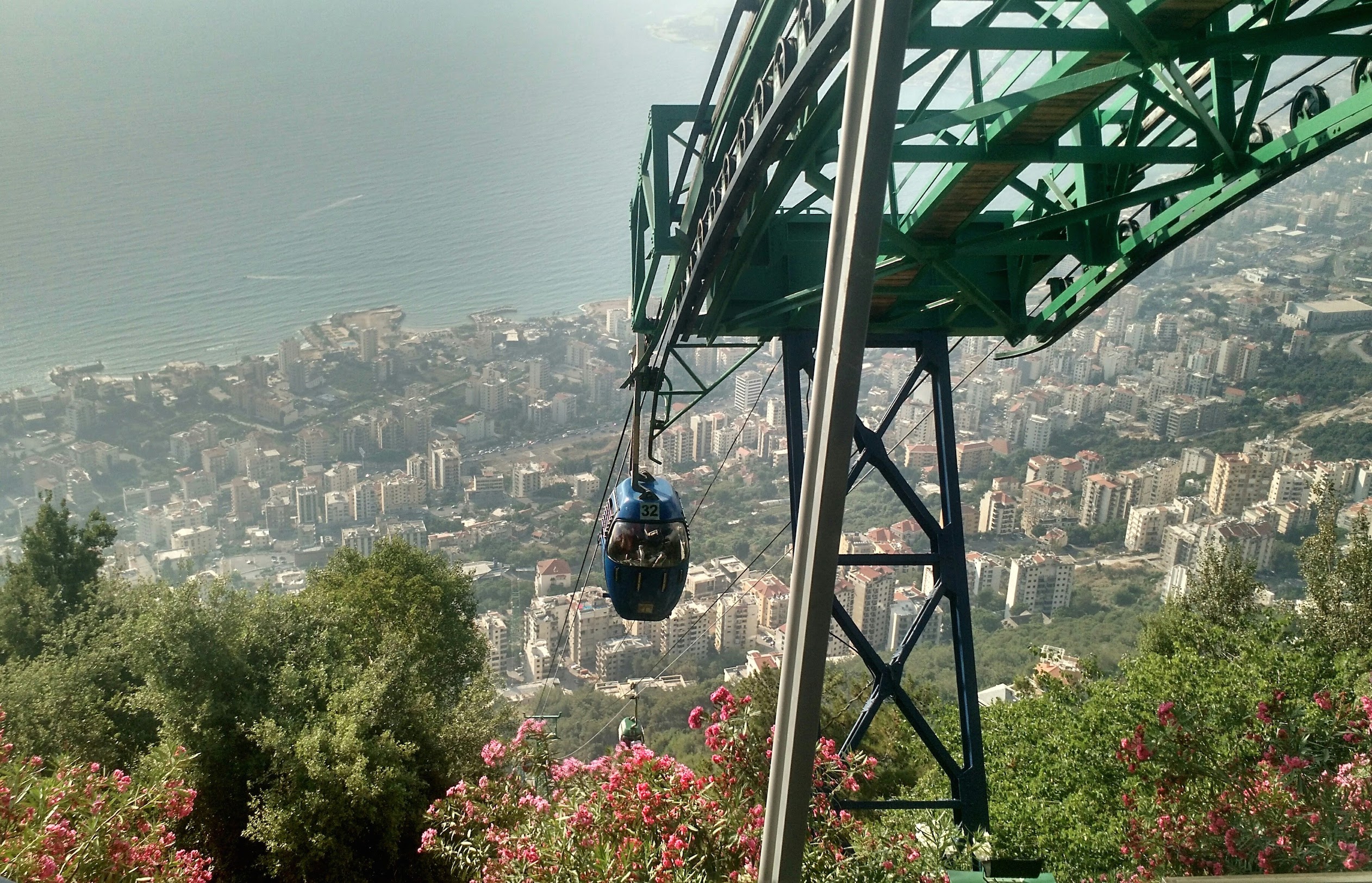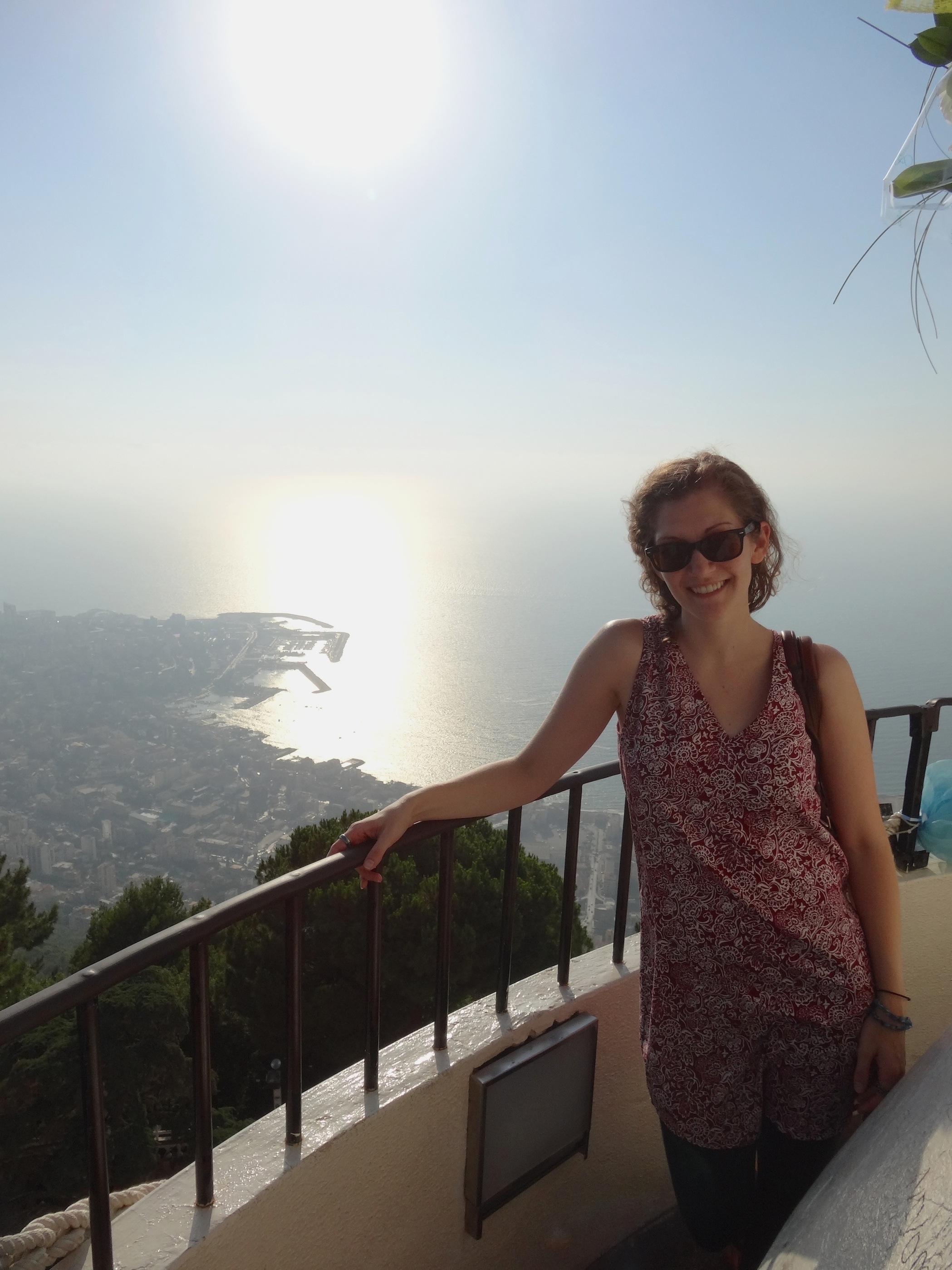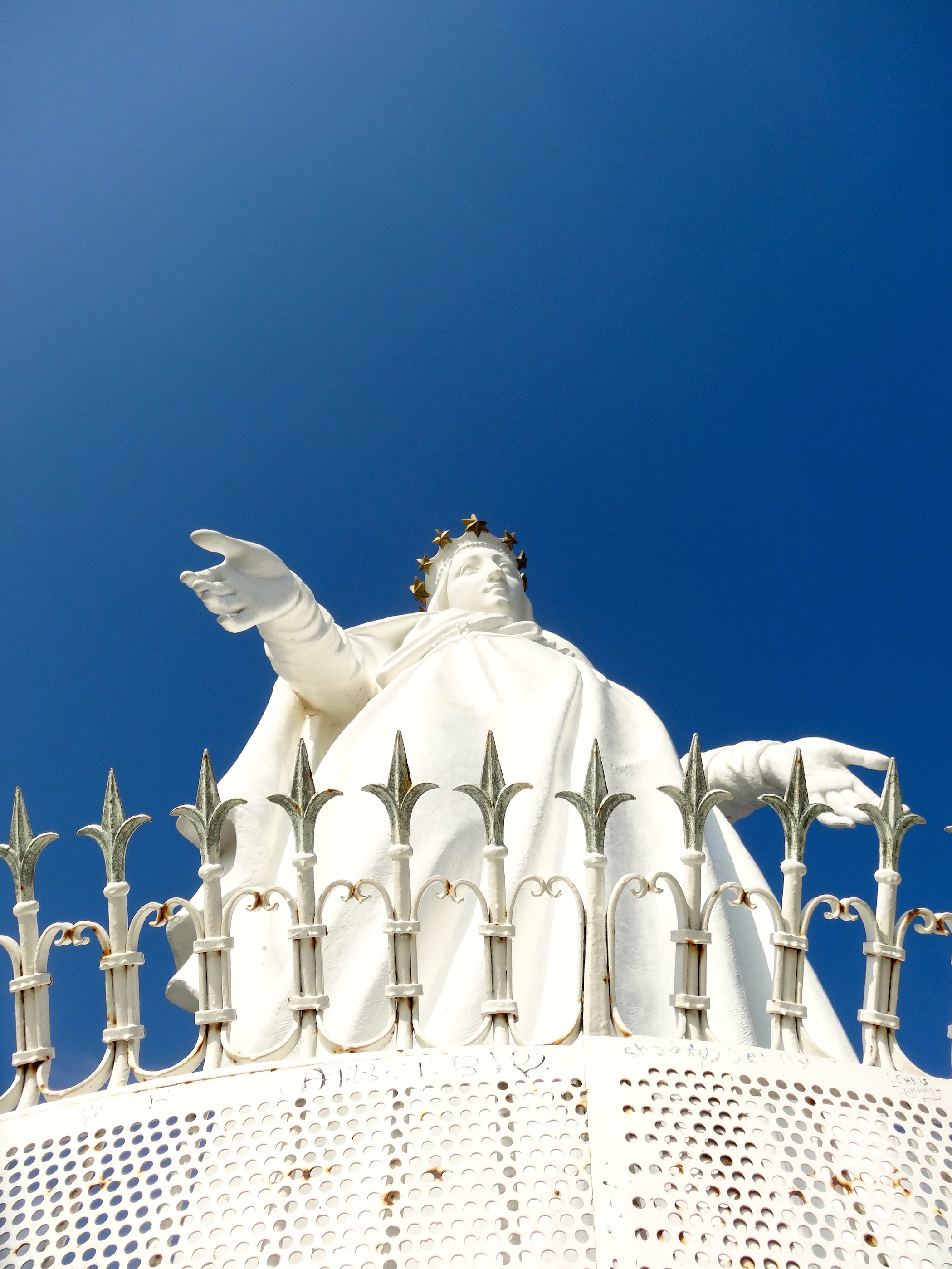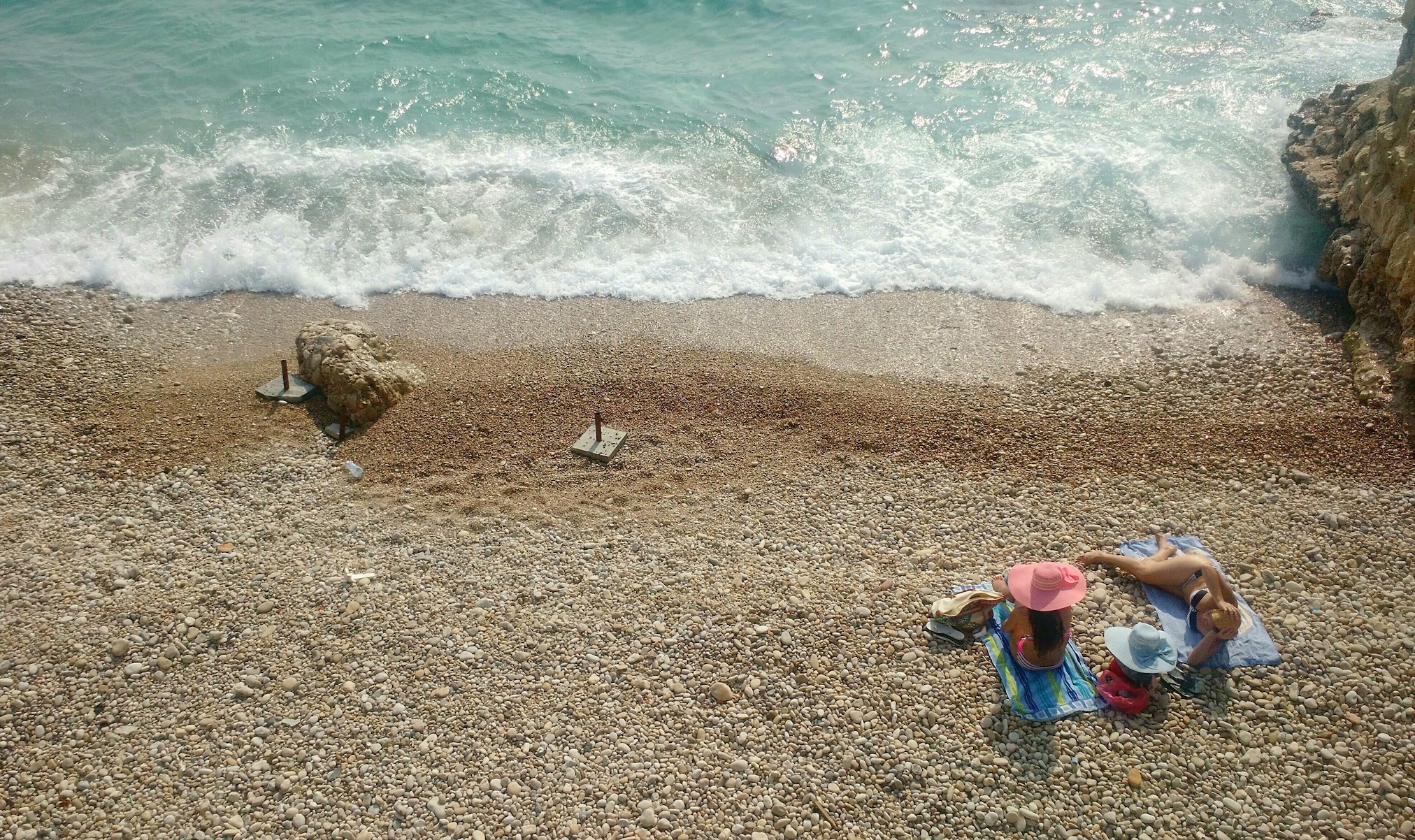One of the more difficult aspects of this program is that the pace has not allowed time for unfettered exploration. There are so many things packed into this tiny little country, but carving out a time to travel and sightsee would require me to push aside my coursework, and I haven’t been willing to do that. Perhaps for this reason, the administrators organized two weekend trips to sites and spaces outside of Beirut and hired a tour guide to speak in Arabic so we could escape the campus without wasting precious language time. The first of these trips focused on three areas just north of the city: Jeita, Harissa, and Byblos.
Our first stop was the Jeita Grotto, a system of two interconnected limestone caves that stretch nearly six miles and contain the world’s largest known stalactites (27 feet long). The entire upper cave is walkable, allowing people to meander along a path lined with stalagmites, stalactites, ponds, and an array of giant crystallized formations that resemble mushrooms, orchids, and chandeliers. Our guide pointed out a particular formation in which many people see a resemblance to Buddha. It reminded me of those people who see visions of the Virgin Mary in their toast. I suspect that the entire cave could serve as a Rorschach test. In the lower cave, we had to board a small boat for a brief u-tour of the excavation, as most of this section is filled with water. No photos were allowed in either cave, but here’s a peak at what the upper grotto and lower grotto look like inside. Truly, this place is the cave of wonders. Definitely one of the more spectacular sites I have visited.
The trip through the Jeita Grotto was my first guided tour in Arabic. Even though our guide spoke as slow as humanly possible – enunciating clearly and pausing after each word – I understood surprisingly little of what she said. Not for the first time, it put my ego in check and reminded me that my Arabic vocabulary is not as large as I think it is – especially when it comes to monologues about ancient history, archaeology, and the chemistry of geological formations.
Our next stop on the trip was Harissa. To reach this village, you either have to drive up the mountain from Jounieh Bay or make the journey using a creaky gondola lift called a “teleferique.” At the top stands a giant statue of Mary named Our Lady of Lebanon (Notre Dame du Liban) that belongs to the Maronite Church. As evidenced by the swarms of people spiraling up the tower of the statue and visiting its shrine, Harissa serves as a pilgrammage site – not only for Christians, but also for Muslims and Druze across the Middle East. It was my third time visiting the statue, and even though the crowded shrine and cheesy photo ops render this site as something less than peaceful, I have been struck each time by the power of the view. The towering statue looks down the mountain toward Beirut with her arms outstretched – gesturing for me to just pause a minute and absorb it.
For the final stop of our trip, we drove a bit further up the coast to a city with multiple names. In Arabic it is typically called Jbeil, but in English we usually refer to it as Byblos – a mangling of its original name, Papyrus. The letter ‘P’ doesn’t exist in Arabic and often becomes a ‘B.’ If you were to attend a Lebanese picnic, for example, you might see people drinking a Bebsi or eating a bag of chibs. So Papyrus became Babyrus, and over time morphed into Byblos. Wikipedia informed me that Byblos was also referred to as Geval in the Hebrew Bible and Gibelet during the Crusades. Whatever its name, this city is thought to be the oldest continuously inhabited city in the world, with people living there as early as 5,000 B.C. Others might argue that Damascus has been inhabited since 9,000 BC, but in my opinion, the difference is irrelevant. They are both unfathomably old.
Unfortunately, we were unable to see anything that bore evidence of Byblos’s 7,000 + years of existence. I did, however, visit a magnificent beach and eat one of the best meals I had during my time in Lebanon.The ancient Phoenician temples and archaeological sites will have to wait for the next visit.



